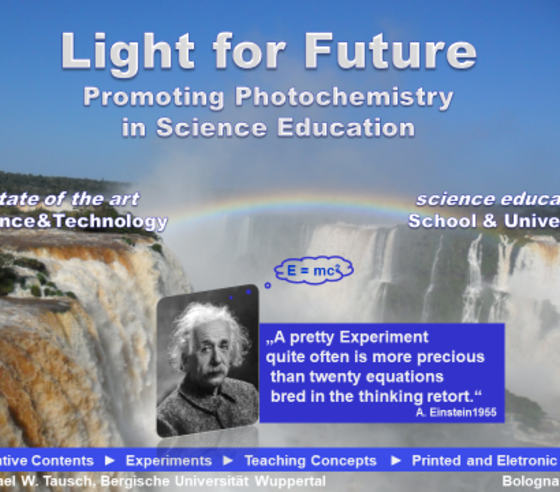1. Light for Future - Experiments with Light
Research-based chemistry didactics has to explore processes involving light (in short: photoprocesses) for teaching purposes. This means, to build bridges between the state of the art in science and technology and the chemistry education at schools and universities. A. Einstein's often cited sentence “A nice experiment is often more valuable than twenty formulae hatched in the mind's retort” is a suitable didactic guiding principle for research concerning innovative contents with light and for the development of teaching/learning materials.


The “pretty” experiments with light (see picture) from the Wuppertal chemistry didactics department cover a variety of photoprocesses, some with and some without substance conversion. They relate to the content of chemistry lessons and are connected to numerous current and future applications in energy-saving and resource-conserving devices and processes. These range from OLED displays on mobile phones and other electronic devices, which are already commonly used today, to innovative solar cells with increasingly better performance parameters, as well as to the artificial photosynthesis of fuels for transport and basic chemicals for industry. The goal is to realize these synthesis starting water and carbon dioxide, and using directly solar light as the sole energy source.
